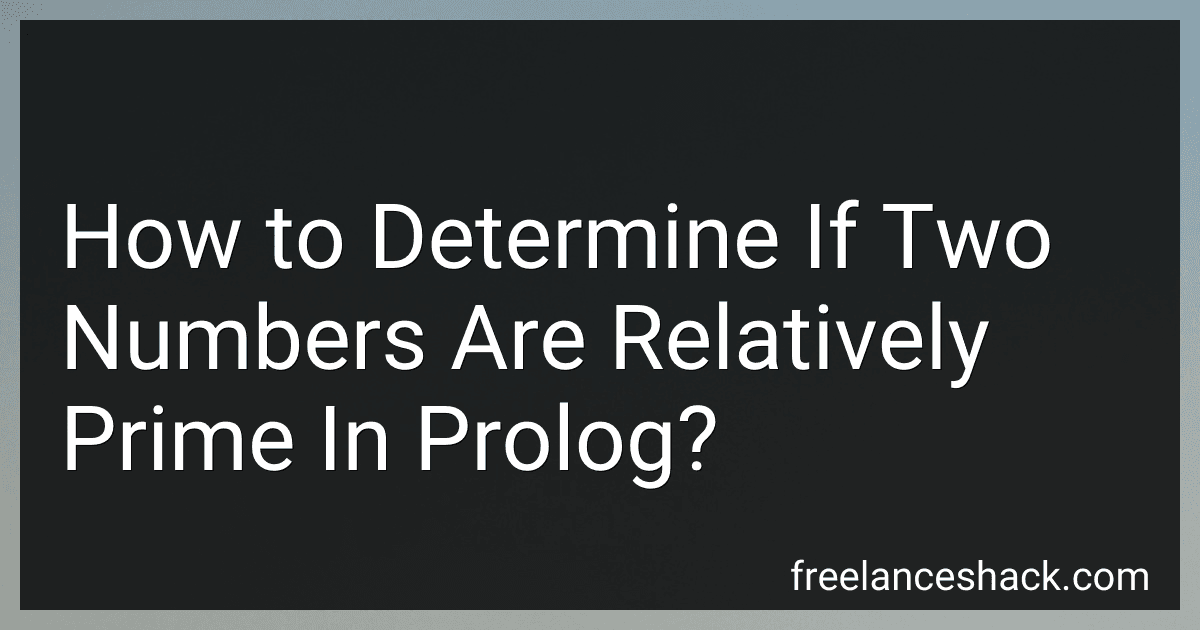Best Prolog Programming Books to Buy in November 2025
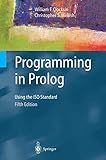
Programming in Prolog: Using The Iso Standard
- AFFORDABLE QUALITY: SAVE MONEY WITH GENTLY USED TITLES IN GREAT SHAPE!
- ECO-FRIENDLY CHOICE: SUPPORT SUSTAINABILITY BY RECYCLING BOOKS TODAY!
- UNIQUE FINDS: DISCOVER RARE GEMS AND HIDDEN TREASURES IN OUR COLLECTION!


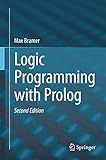
Logic Programming with Prolog


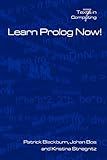
Learn Prolog Now! (Texts in Computing, Vol. 7)
- QUALITY ASSURED: GENTLY USED, INSPECTED FOR BEST CONDITION!
- COST-EFFECTIVE: SAVE MONEY WITH AFFORDABLE USED BOOK OPTIONS.
- ECO-FRIENDLY: SUPPORT SUSTAINABILITY BY BUYING PRE-OWNED BOOKS!


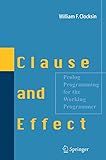
Clause and Effect: Prolog Programming for the Working Programmer
- QUALITY ASSURANCE: THOROUGHLY INSPECTED FOR GOOD CONDITION.
- ECO-FRIENDLY: SUSTAINABLE CHOICE FOR BUDGET-CONSCIOUS READERS.
- UNIQUE FINDS: ACCESS RARE TITLES AT A FRACTION OF THE COST!


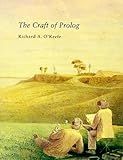
The Craft of Prolog (Logic Programming)


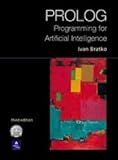
Prolog Programming for Artificial Intelligence


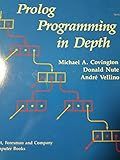
Prolog Programming in Depth
- AFFORDABLE PRICES ON QUALITY PRE-OWNED BOOKS.
- THOROUGHLY INSPECTED FOR QUALITY AND READABILITY.
- ECO-FRIENDLY CHOICE: REDUCE, REUSE, AND RECYCLE!


In Prolog, you can determine if two numbers are relatively prime by using the Euclidean algorithm. This algorithm involves finding the greatest common divisor (GCD) of the two numbers and then checking if the GCD is equal to 1. If the GCD is 1, then the numbers are relatively prime.
You can implement this in Prolog by defining a predicate, such as relatively_prime/2, that takes two numbers as input and calculates their GCD using the Euclidean algorithm. If the GCD is 1, the predicate should return true.
Here is an example implementation of the relatively_prime/2 predicate in Prolog:
gcd(A, 0, A). gcd(A, B, G) :- B > 0, C is A mod B, gcd(B, C, G).
relatively_prime(A, B) :- gcd(A, B, G), G =:= 1.
You can then query the predicate relatively_prime/2 with two numbers to determine if they are relatively prime. For example:
?- relatively_prime(14, 15). true.
This query would return true because 14 and 15 are relatively prime since their GCD is 1.
How can I use the GCD function to find out if two numbers are relatively prime in Prolog?
You can use the GCD function in Prolog to find out if two numbers are relatively prime by checking if their greatest common divisor is equal to 1. Here is an example implementation in Prolog:
gcd(X, 0, X) :- X > 0, !. gcd(X, Y, Z) :- Y > 0, N is X mod Y, gcd(Y, N, Z).
are_relatively_prime(X, Y) :- gcd(X, Y, Z), Z =:= 1.
You can then query Prolog with the are_relatively_prime/2 predicate to check if two numbers are relatively prime. For example:
?- are_relatively_prime(15, 28). true.
?- are_relatively_prime(8, 12). false.
What is the application of checking relative primality in real-world scenarios using Prolog?
One real-world scenario where checking relative primality using Prolog is in cryptography. In cryptography, it is important to determine if two numbers are relatively prime in order to generate strong encryption keys. Prolog can be used to efficiently check if two numbers are relatively prime, which is a crucial step in generating secure encryption keys. By using Prolog for this purpose, encryption algorithms can be implemented more easily and securely.
How to check if two numbers are relatively prime in Prolog?
To check if two numbers are relatively prime in Prolog, one can use the following code:
gcd(X, Y, Z) :- Y =:= 0, Z is X. gcd(X, Y, Z) :- Y =\= 0, T is X mod Y, gcd(Y, T, Z).
relatively_prime(X, Y) :- gcd(X, Y, Z), Z =:= 1.
To check if two numbers, for example, 10 and 21 are relatively prime, you can use the following query:
?- relatively_prime(10, 21).
If the result is true, then the two numbers are relatively prime. If the result is false, then the numbers are not relatively prime.
What is the purpose of identifying if two numbers are relatively prime in Prolog?
Identifying if two numbers are relatively prime in Prolog is useful for various mathematical calculations and problem-solving tasks. Relatively prime numbers have no common factors other than 1, meaning they do not have any common divisors other than 1. This property can be used in various number theory problems, such as finding the least common multiple of two numbers, calculating modular inverses, and generating coprime pairs for encryption algorithms. Identifying relatively prime numbers can also be helpful in reducing fractions to their simplest form and determining the number of coprime integers less than a given number.
What is the efficiency of different methods for checking relative primality in Prolog?
There are several methods for checking relative primality in Prolog, each with its own efficiency. Some common methods include:
- Euclid's algorithm: This algorithm is based on the fact that two numbers are relatively prime if their greatest common divisor is 1. The efficiency of this algorithm depends on the sizes of the numbers being checked. For large numbers, it can be inefficient as it requires multiple recursive calls to find the greatest common divisor.
- Trial division: This method involves checking for common factors between the two numbers by dividing each number by all numbers less than its square root. This method is simple and efficient for small numbers, but can be slow for large numbers with many divisors.
- Fermat's algorithm: This method is based on Fermat's Little Theorem, which states that if p is a prime number and a is any positive integer less than p, then a^(p-1) mod p = 1. This algorithm is efficient for large numbers as it only requires exponentiation and modular arithmetic operations.
Overall, the efficiency of each method for checking relative primality in Prolog depends on the size of the numbers being checked and the specific implementation of the algorithm. In general, Fermat's algorithm is considered to be more efficient for large numbers, while trial division may be more appropriate for smaller numbers.
